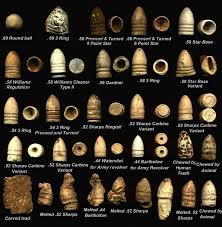The American Civil War, fought from 1861 to 1865, was a time of intense innovation and brutal combat. Among the many factors that shaped the outcome, bullets played a surprisingly central role. Think about it—every soldier on the front line depended on his rifle and the bullet it carried. These tiny bits of lead were far more than just ammunition; they were tools of strategy, destruction, and survival.
So why focus on Civil War bullets? Because understanding these projectiles offers a unique window into the technology, tactics, and tragedies of 19th-century warfare. From the famed Minié ball to crude musket rounds, each bullet had a story to tell.
The Minié Ball – The War’s Most Infamous Bullet
What Made the Minié Ball Unique
You’ve probably heard of the Minié ball, but what exactly was it? Named after its French inventor Claude-Étienne Minié, this conical bullet changed warfare forever. Unlike round musket balls, the Minié ball had grooves (called cannelures) and expanded upon firing to grip the rifling of the barrel. This made it far more accurate and deadly over long distances.
Devastating Impact on the Battlefield
The Minié ball didn’t just travel farther—it shattered bones and tore through tissue like a hot knife through butter. It was the primary reason for the horrific limb injuries and subsequent amputations Civil War soldiers endured. Doctors of the time weren’t equipped to handle such trauma, which made the bullet infamous in military medicine.
Types of Bullets Used During the Civil War
Round Musket Balls
Before the Minié ball came into play, round musket balls were the standard. These were typically made of soft lead and used in smoothbore muskets. They lacked accuracy but made up for it in sheer volume. Troops often fired in volleys, hoping numbers would compensate for imprecision.
Conical Bullets and Rifle Ammunition
The advent of rifled muskets brought with it conical bullets, including the Minié. These had pointed tips and hollow bases, designed to expand when fired and engage the rifling. This led to greater accuracy and killing power.
Buck and Ball Shot
One particularly brutal type of ammo was the “buck and ball” load—a large musket ball accompanied by several smaller buckshot pellets. It was devastating at close range and used effectively during ambushes and assaults.
Materials and Manufacturing of Civil War Bullets
The Role of Lead and Other Materials
Most bullets in the Civil War were made of lead, a soft metal easy to mold but heavy enough to cause serious damage. Occasionally, soldiers used makeshift materials when supplies ran low—scraps of metal, coins, or even pebbles.
How Bullets Were Manufactured
Ammunition factories sprang up across both the North and South. While the Union had advanced industrial facilities, the Confederacy often relied on smaller operations or even battlefield recovery. Bullets were cast in molds, cooled, and sometimes paper-wrapped with black powder for easier loading.
Union vs Confederate Ammunition
Differences in Ammunition Supply
The Union’s industrial power gave them a clear edge. They mass-produced bullets, cartridges, and rifles in large quantities. The Confederacy, on the other hand, faced shortages and had to improvise or reuse spent bullets and casings.
Quality and Quantity Variations
While Union ammo was standardized and reliable, Confederate bullets varied in quality. Some were poorly cast or improperly sized, leading to jamming and misfires—a deadly inconvenience in battle.
Evolution of Firearms and Bullet Design
From Smoothbore to Rifled Muskets
The transition from smoothbore muskets to rifled ones was revolutionary. Rifled barrels allowed bullets like the Minié to spin, increasing both range and accuracy. This shift altered battlefield tactics and made old-school charges suicidal.
How Bullet Design Influenced Weapon Development
As bullets improved, so did firearms. Rifles were redesigned to accommodate longer, heavier bullets. Breech-loading and repeating rifles also started to appear, hinting at the future of warfare.
Tactical Use of Bullets in Battle
Firing Ranges and Accuracy
With rifled bullets, soldiers could engage the enemy from hundreds of yards away. This increased range changed how battles were fought—no more close-range brawls; instead, it was about positioning and precision.
Loading Speed and Battlefield Efficiency
Despite advances, most rifles were still muzzle-loaded, meaning soldiers had to pour powder, place a bullet, and ram it all down the barrel. Under fire, this was nerve-wracking and dangerous. The development of cartridges helped speed things up considerably.
The Medical Consequences of Civil War Bullets
Injury Types Caused by Bullets
Civil War bullets didn’t just poke holes—they shattered bones, destroyed tissue, and caused massive bleeding. The soft lead deformed on impact, creating wide, gaping wounds.
Why Amputation Was So Common
Without modern surgical techniques, doctors often had one solution for a shattered limb: amputation. It was the quickest way to prevent infection, though many soldiers still died from disease afterward.

